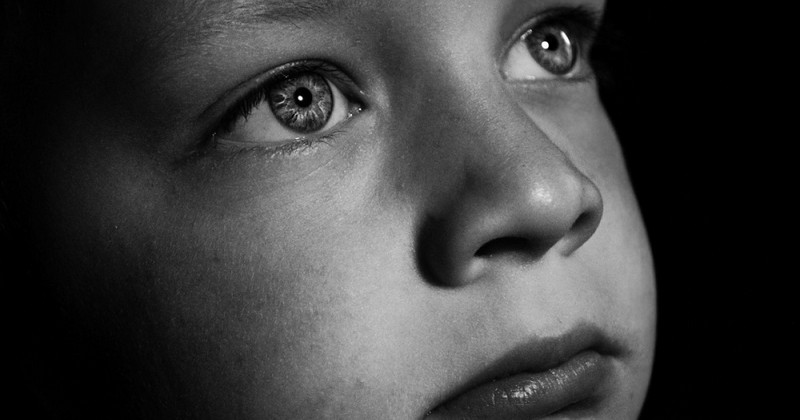Childhood anxiety: symptoms and what to do about it

It is important to take care of this type of psychological problems when they appear in children.
The world of children is governed by its own rules, and in certain aspects we adults have some difficulty in interpreting them. In childhood, life is experienced in a different way, and the psychological side of children is not necessarily easy for caregivers, whether parents or guardians, to understand.
This is something to keep in mind, especially when assessing the importance of recognizing the signs of child anxiety at an early age. recognizing the signs of child anxiety in timein order to curb them. In this article we will speak about this phenomenon, more common than it seems.
What is child anxiety?
Childhood anxiety occurs when, during childhood, children feel that the experience they are going through at a particular time, or over a longer period of time, is beyond them, with no clear or relatively easy solution to deal with.
Although anxiety disorders in childhood are something quite specific that does not have to occur in all cases in which a child feels anxiety, the latter phenomenon is more frequent than one might think. Situations that can increase the occurrence of anxiety disorders are, for example, an education based on punishment, the existence of mistreatment or bullying, the obligation to attend many extracurricular activities, etc.
Thus, it can be said that childhood anxiety is a psychological and physiological phenomenon. a psychological and physiological phenomenon in which the person enters into a state of alert in a sustained manner.The child may experience symptoms based on rumination (obsessive and "looping" thinking) and hyperactivation of the autonomic nervous system that negatively affect one or more areas of the child's life, such as family life, learning in the school he or she attends, etc.
Symptoms of anxiety in children.
Of course, childhood anxiety has a common basis to the way in which all human beings, regardless of age, experience anxiety. However, the symptoms are expressed in a different way, given that the vital moment in which the youngest children find themselves entails, of course, other ways of interacting with the environment, other ways of interacting with the environment and of trying to adapt to it..
Thus, although in practice each case is unique, in general childhood anxiety is expressed in the following symptoms. Each of these need not indicate the sustained presence of anxiety, but if a few are present at the same time, this is probably the case.
- Fear of being alone.
- Tics and semi-automatic stereotyped behaviors (hair pulling, nail biting, etc.).
- Crying.
- Need to be physically in contact with the caregiver, constantly.
- Anguish crisis when separated from the caregivers.
On the other hand, In the case of anxiety disorders, other more specific symptoms may appear, depending on the problem. depending on what the problem is. For example, in the case of phobias, the crises occur in the face of specific stimuli.
How to help children with anxiety
These are some tips to follow to help children to overcome and mitigate their state of anxiety.
1. Give clear behavioral guidelines
Many times, anxiety appears as a reaction to a chaotic environment, which is not understood. For example, it is not uncommon for childhood anxiety to arise in experiences where there is a perceived contradiction in the rules of behavior to be followed at home.
It is therefore important to be consistent with these rules, not to force children to obey arbitrary and changing rules, and above all to make sure that they understand them.and, above all, make sure that they understand them and why they make sense, even if it is through very simplified explanations about their usefulness.
2. Communicate more and better
At a certain age, young children are already able to express in words what it is that makes them feel bad.. The fact that their cognitive skills are not yet fully developed does not mean that their point of view should not count.
3. Show them support
The fact that a child feels protected by an adult makes him/her lose fear of the environment, since he/she feels that even if he/she makes a mistake and does something wrong, the presence of the caregivers will act as a cushion or buffer.
4. Give them affection
Not all encouragement has to be based on information expressed through words. Affection is essential for a correct development during infancy. for a correct development during childhood, and in fact it is necessary to rely on it so that children develop adaptive attachment styles.
5. Explain to them that they should not feel bad
When experiencing anxiety, it is easy to fall into the trap of blaming oneself. This is also true for children, so make it clear that this is a phenomenon that we can only consciously influence indirectly.
(Updated at Apr 12 / 2024)